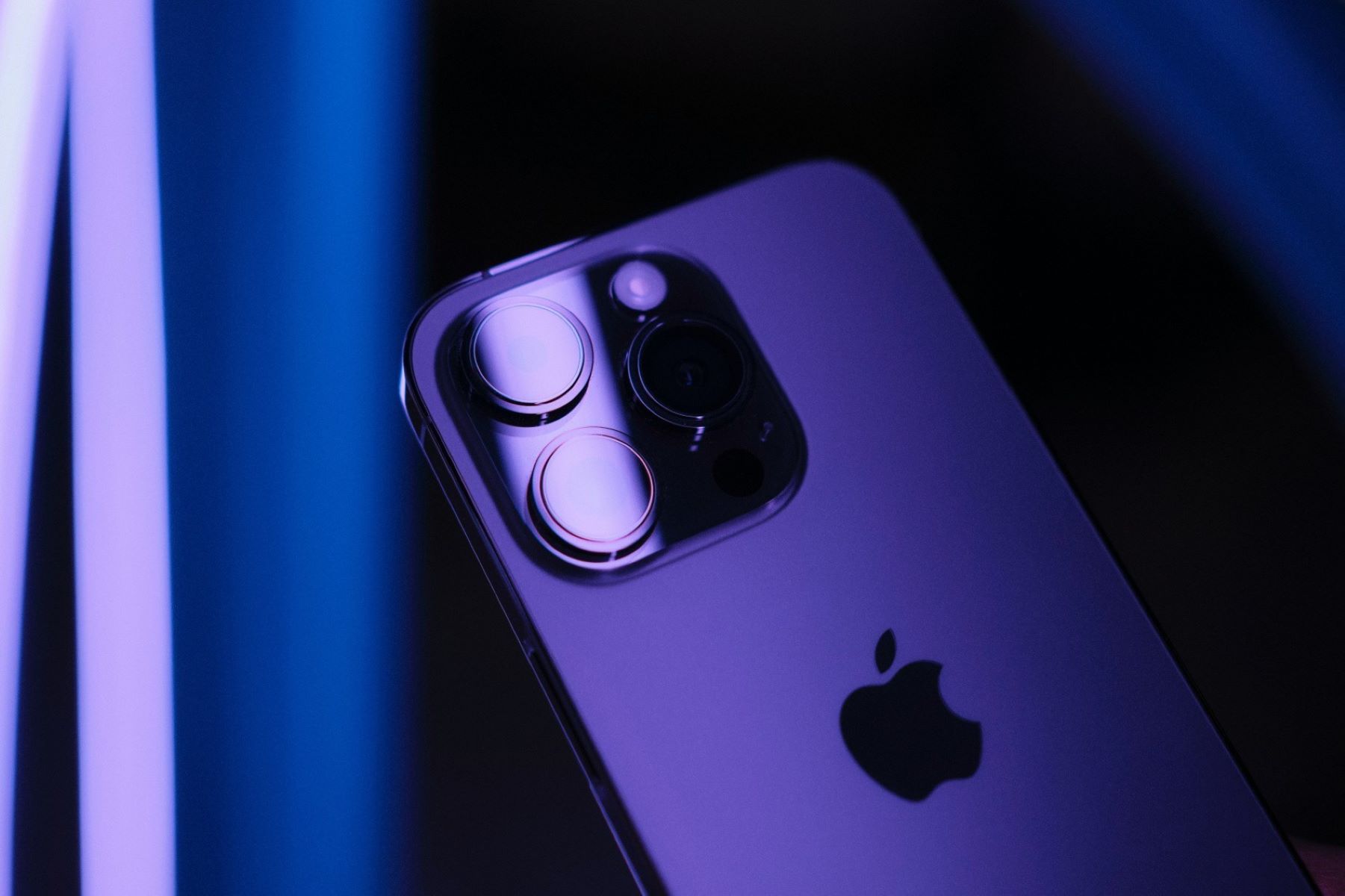What is eSIM?
eSIM, short for embedded SIM, is a revolutionary technology that has transformed the way we connect to mobile networks. Unlike traditional SIM cards, which are physical, removable chips, eSIMs are integrated directly into a device, eliminating the need for a physical SIM card. This compact, built-in module is rewritable and can store multiple network profiles, allowing users to switch between different mobile carriers without needing to swap out physical SIM cards.
eSIM technology offers a seamless and convenient way to activate cellular plans and connect to mobile networks. It is designed to simplify the process of setting up and managing mobile connectivity, making it especially beneficial for users who frequently travel or require multiple phone numbers for personal and professional use.
One of the key advantages of eSIM is its versatility. With eSIM-enabled devices, users can easily add, activate, and switch between different mobile plans without the hassle of physically inserting or replacing SIM cards. This flexibility empowers users to adapt their connectivity options to suit their specific needs, whether it involves accessing local data plans while traveling abroad or seamlessly transitioning between personal and business phone lines.
Furthermore, eSIM technology aligns with the trend towards slimmer and more streamlined device designs. By eliminating the need for a physical SIM card slot, manufacturers can create sleeker, more compact devices with increased internal space for other components or larger batteries. This not only enhances the aesthetic appeal of devices but also contributes to improved overall user experience.
In summary, eSIM represents a significant advancement in mobile connectivity, offering users a more flexible, convenient, and efficient way to manage their cellular plans and network connections. As this technology continues to gain traction, it is poised to redefine the way we engage with mobile networks, providing a glimpse into the future of seamless, adaptable connectivity.
Benefits of eSIM
eSIM technology offers a myriad of compelling benefits that have reshaped the landscape of mobile connectivity. Here are some of the key advantages of eSIM:
-
Convenience and Flexibility: With eSIM, users can easily add, activate, and manage multiple mobile plans on a single device without the need to physically insert or swap out SIM cards. This level of flexibility is particularly advantageous for individuals who frequently travel or require separate phone numbers for personal and professional use. Whether it's accessing local data plans while abroad or seamlessly transitioning between different mobile carriers, eSIM technology empowers users to adapt their connectivity options with unparalleled ease.
-
Streamlined Setup Process: Activating a cellular plan with eSIM is a streamlined and user-friendly process. Instead of obtaining and inserting a physical SIM card, users can simply download a mobile carrier's eSIM profile and activate it directly on their device. This simplified setup eliminates the need for physical SIM cards and the associated logistics, making it more convenient for users to establish and manage their mobile connectivity.
-
Space-Saving Design: By integrating the SIM functionality directly into the device's hardware, eSIM technology eliminates the need for a physical SIM card slot. This space-saving design not only contributes to sleeker and more compact device form factors but also allows for more efficient use of internal space, potentially enabling larger batteries or additional components to enhance overall device performance.
-
Enhanced Security: eSIM technology offers enhanced security features, reducing the risk of physical SIM card tampering or unauthorized removal. The embedded nature of eSIMs provides an added layer of protection against SIM card theft or unauthorized access, contributing to a more secure mobile connectivity experience for users.
-
Environmental Sustainability: The adoption of eSIM technology aligns with sustainability initiatives by reducing the reliance on physical SIM cards, which often require plastic production and contribute to electronic waste. By promoting a shift towards digital, reusable eSIM profiles, this technology supports environmental conservation efforts and contributes to a more sustainable approach to mobile connectivity.
In summary, the benefits of eSIM technology extend beyond convenience and flexibility, encompassing streamlined setup processes, space-saving design, enhanced security, and environmental sustainability. As eSIM continues to gain traction across a wide range of devices, its transformative impact on mobile connectivity is poised to redefine the way users engage with cellular plans and network connections.
How many eSIMs can iPhone 13 support?
The iPhone 13 lineup, comprising the iPhone 13, iPhone 13 mini, iPhone 13 Pro, and iPhone 13 Pro Max, introduces an impressive capability in terms of eSIM support. These devices are engineered to accommodate the activation and management of multiple eSIMs, providing users with enhanced flexibility and connectivity options.
Specifically, the iPhone 13 models are designed to support the provisioning of up to two distinct eSIMs simultaneously. This means that users have the ability to activate and utilize two separate mobile plans on their iPhone 13 device, leveraging the advantages of eSIM technology to seamlessly switch between different carriers or access specific network profiles as needed.
The support for dual eSIMs on the iPhone 13 represents a significant advancement in mobile connectivity, catering to the diverse needs of users who may require multiple phone numbers for personal, professional, or travel-related purposes. With this capability, individuals can effectively manage and utilize two distinct mobile plans on a single device, eliminating the need to carry multiple physical SIM cards or rely solely on a primary carrier.
Furthermore, the ability to support two eSIMs on the iPhone 13 aligns with the device's commitment to versatility and adaptability. Whether users seek to maintain separate personal and business phone lines, access local data plans while traveling internationally, or take advantage of competitive offerings from different mobile carriers, the dual eSIM support empowers them to tailor their connectivity solutions to suit their specific requirements.
This capability not only enhances the practicality of the iPhone 13 but also underscores the device's position at the forefront of mobile technology innovation. By accommodating multiple eSIMs, the iPhone 13 exemplifies a commitment to providing users with a seamless and efficient mobile connectivity experience, offering unparalleled flexibility and convenience in managing diverse cellular plans and network connections.
In essence, the iPhone 13's support for dual eSIMs represents a pivotal feature that amplifies the device's appeal to users seeking enhanced flexibility and adaptability in their mobile connectivity solutions. This capability underscores the iPhone 13's status as a cutting-edge device that embraces the transformative potential of eSIM technology, setting a new standard for versatile and user-centric mobile connectivity experiences.
How to add multiple eSIMs on iPhone 13?
Adding multiple eSIMs to your iPhone 13 is a straightforward process that empowers you to leverage the full potential of eSIM technology and enjoy the flexibility of managing multiple mobile plans on a single device. Here's a step-by-step guide to adding multiple eSIMs on your iPhone 13:
-
Check eSIM Compatibility: Before proceeding, ensure that your mobile carrier supports eSIM activation and provides eSIM profiles for your desired mobile plans. Contact your carrier or visit their official website to verify eSIM compatibility and obtain the necessary eSIM activation details.
-
Access eSIM Settings: On your iPhone 13, navigate to the "Settings" app and select "Cellular" or "Mobile Data." Look for the "Add Cellular Plan" option, which is specifically designed for adding eSIM profiles to your device.
-
Scan QR Code or Enter Details: Depending on your mobile carrier's eSIM activation process, you may be prompted to scan a QR code provided by your carrier or manually enter the eSIM activation details, including the activation code and other relevant information. Follow the on-screen instructions to proceed with the eSIM setup.
-
Activate eSIM Profile: Once you have scanned the QR code or entered the required details, your iPhone 13 will begin the activation process for the eSIM profile. This typically involves connecting to your carrier's network and finalizing the setup of the eSIM on your device.
-
Repeat for Second eSIM: After successfully adding and activating the first eSIM profile, you can proceed to add a second eSIM by following the same process. Access the "Add Cellular Plan" option again and scan the QR code or enter the activation details for the second eSIM profile provided by your secondary mobile carrier.
-
Manage Dual eSIMs: Upon completing the setup for both eSIM profiles, your iPhone 13 will display the dual eSIM configurations, allowing you to easily switch between the two mobile plans as needed. You can designate a primary line for calls and data usage while designating the secondary line for specific purposes, such as international travel or business-related communications.
By following these steps, you can seamlessly add and manage multiple eSIMs on your iPhone 13, unlocking the full potential of eSIM technology and embracing the convenience of dual mobile plan support on a single device. This capability empowers you to adapt your connectivity options to suit your specific needs, whether it involves maintaining separate personal and business lines, accessing competitive offerings from different carriers, or simplifying your mobile connectivity experience with eSIM technology.
Limitations of using multiple eSIMs on iPhone 13
While the support for multiple eSIMs on the iPhone 13 offers remarkable flexibility and convenience, it is important to acknowledge the limitations associated with utilizing this feature. Understanding these limitations can provide users with a comprehensive perspective on the practical considerations of managing multiple eSIMs on their device.
-
Limited Carrier Support: One of the primary limitations of using multiple eSIMs on the iPhone 13 is the availability of compatible mobile carriers. Not all carriers offer eSIM support, and even among those that do, the provision of eSIM profiles for specific plans may vary. This limitation can restrict the options available to users seeking to activate multiple eSIMs, potentially limiting their ability to fully leverage the dual eSIM capability of the iPhone 13.
-
Network Switching Restrictions: While the iPhone 13 allows for the activation of two eSIMs, users may encounter limitations when switching between the two networks. Some carriers impose restrictions on the frequency or ease of switching between eSIM profiles, potentially requiring additional steps or time to transition from one eSIM to another. This limitation can impact the seamless experience that users expect when managing multiple eSIMs on their device.
-
Device Compatibility: The use of multiple eSIMs on the iPhone 13 may present compatibility challenges with certain device functionalities or services. For example, features such as dual-SIM standby or specific network-related services may have limitations when both eSIMs are active simultaneously. Users should be mindful of potential compatibility issues that could affect the overall user experience when utilizing dual eSIMs on their device.
-
Data Roaming Considerations: When using multiple eSIMs for international travel, users should be aware of potential limitations related to data roaming. Depending on the carriers and eSIM plans involved, data roaming capabilities, associated costs, and network coverage may vary between the two eSIM profiles. Understanding these limitations is crucial for users who rely on dual eSIMs for seamless connectivity during international trips.
-
Management Complexity: Managing multiple eSIMs on a single device introduces a layer of complexity in terms of plan management, billing, and network preferences. Users must navigate the intricacies of balancing usage across two distinct mobile plans, ensuring that each eSIM is utilized effectively based on specific needs and scenarios. This complexity may require additional attention and organization to optimize the benefits of dual eSIM support on the iPhone 13.
By acknowledging these limitations, users can make informed decisions when considering the utilization of multiple eSIMs on their iPhone 13. While the dual eSIM capability offers unparalleled flexibility, understanding the practical constraints can empower users to navigate and optimize their dual eSIM experience effectively.


